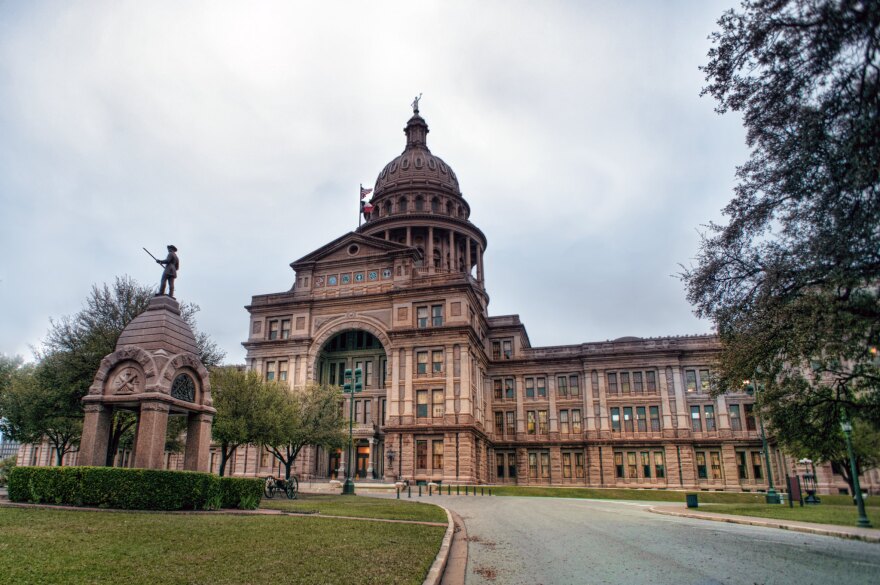In late March, Gov. Greg Abbott held a press conference at Hamshire-Fannett Elementary School in Beaumont, Texas to announce a new bill that would expand broadband access in the state. The choice of venue was purposeful — Beaumont ranks as one of the most poorly internet-connected cities in the country.
This weekend HB5, or “The Texas Broadband Bill”, was one of the few pieces of legislation that passed with strong bipartisan support during an especially contentious legislative session only eight weeks after its official announcement by Abbott.
The bill was authored by Representative Trent Ashby (R-Lufkin) and establishes the creation of a “Broadband Development Office” within the Texas Comptroller of Public Accounts. That includes the formation of a broadband development program, the establishment of a broadband development map to be updated regularly and published by the office and the development of a statewide broadband plan within one year of the bill becoming law on Sept. 1, 2021.
The COVID-19 pandemic made clear the need for a more extensive internet infrastructure as workers and students in quarantine at home struggled with limited and unreliable access. The bill received unanimous legislative committee support from the beginning.
Co-author of the bill and Republican Representative Hugh Shine (R- Temple) said in an announcement in March, "I don't think the 'work-from-home' mentality is going away as the pandemic comes to an end. Businesses no longer have to relocate to a major city, and employees don't have to work in an office for many businesses. It is important for our economy across Texas that we have access.”
While the idea of equitable access to broadband has gained attention over the past year — in Texas various government, private and non-profit organizations have been working toward equitable access for several years through a variety of approaches.
In 2016 the Federal Reserve Bank of Dallas recognized broadband internet as an “integral part of community development” because of its measurable impact on economic inclusion. Today, people depend on internet access for basic needs that impact them economically, such as applying for jobs, paying bills on time and having more affordable access to higher education.
Even something as simple as applying for health insurance coverage under the Affordable Care Act requires internet access at some point in the process.
The Federal Bank has invested in advancing connectivity as part of its obligations under the Community Reinvestment Act, a federal policy that requires the Federal Reserve and other federal banking regulators to help meet the primary economic needs of all segments of their communities, including low and moderate-income neighborhoods.
Aside from direct advocacy with key organizations, most of the work performed by the bank entailed gathering data through pilot programs in communities across the state and designing and publishing frameworks that local governments could use to create more equitable internet access in their regions.
Pharr, Texas in the Rio Grande Valley region was the beneficiary of one of the study pilot programs conducted by the Federal Reserve Bank that provided free broadband internet, bilingual training, and technical support to a selection of local families in 2017.
In the same region, VTX1 — a for-profit internet service provider — originated as a response to a similar need for equitable access to communication technology. In the 1950s it formed a telephone cooperative that served rural areas in South Texas ignored by the big industry players. Over the past decade, VTX1 transformed itself into a leading alternative ISP in the region through exactly the same strategy.
But results from a myriad of patchwork projects across the state like the ones above have been limited.
The Texas Utilities Code, mirroring the FCC, currently defines broadband as internet service capable of providing a download speed of at least 25 megabits per second and an upload speed of at least 3 Mbps. More than 2 million Texas residents either do not have access to the internet that meets this definition or have no access at all today.
Besides the missing infrastructure for connectivity that keeps those 2 million Texans from access, another 3 million Texans with access are simply not subscribed due to social and economic challenges.
House Bill 5 establishes the office and budget to begin providing a comprehensive solution to broadband access that will likely be a long-term process of integrating existing smaller-scale approaches.
Plans to accomplish greater broadband access for Texas through strategic planning, coordination, grants and other economic incentives to existing projects are expected to take several years.
The state will also face many complex challenges like educating rural communities in digital literacy, keeping services affordable, and implementing the new 5G standard, which aims to switch from old wired technologies to new faster wireless options.
TPR was founded by and is supported by our community. If you value our commitment to the highest standards of responsible journalism and are able to do so, please consider making your gift of support today.
Copyright 2021 Texas Public Radio. To see more, visit Texas Public Radio. 9(MDAxODQzOTgwMDEyMTcyNjI4MTAxYWQyMw004))

